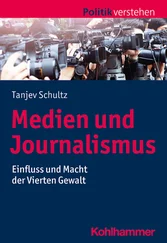Administration officials went on the defensive, frantically trying to explain that the “charges” were merely accounting effects having to do with the retiree health coverage, not employee health coverage, and had something to do with Medicare subsidies. But they might as well have been speaking Sanskrit to the nimble-fingered reporters rushing to get the Really Big Numbers online and into print. In the initial press frenzy, no one reported that none of the companies taking these massive charges was on the hook for a cent. The $1 billion charge that AT&T was taking? It represented the loss of a deduction for something that was costing the company nothing in the first place.
This mini-drama was just the latest example of employers crying wolf about the cost of retirement benefits, or, in this case, employer-subsidized prescription drug coverage. But it illustrates how employers continue to use the public’s ignorance of accounting and the way retiree benefits work to bamboozle analysts, employees, retirees, unions, Congress, and the courts.
This Medicare charade was just the latest inning of a game that started in late 2003, when Congress was poised to add prescription drugs to the things Medicare covered. Large employers recognized an opportunity: Many were providing prescription drug coverage to retirees as part of their retiree health benefits. Their basic message to lawmakers was “Why should we continue to provide prescription drug coverage if Medicare is going to start covering it?”
Employers threatened to dump millions of retirees onto the government program unless the government sweetened the deal for them. The companies were bluffing. For one thing, they had already largely dropped prescription drug coverage for salaried retirees or had shifted much of the cost to them. And they couldn’t unilaterally cancel coverage for union retirees covered by collectively bargained contracts. But lawmakers didn’t know employers were making an empty threat. In any case, providing a subsidy to employers was a safe political move: They would appear to be helping retirees, being pro-business, and saving taxpayers money.
So lawmakers awarded employers a generous subsidy. Beginning in 2006, the companies would receive a subsidy of 28 percent of what they paid, up to $1,330 per retiree, per year, to help pay for prescription drug coverage.
That sounds straightforward, but there were windfalls within windfalls. Not only was the subsidy tax-free, but employers could deduct the government handout. In other words, they could treat the free government money as if it were coming out of company coffers, and deduct every cent. Employers did the happy dance.
Even better: The legislation said that employers would receive a subsidy of 28 percent of the cost of the coverage, but it didn’t say the employer’s cost. Thanks to the lack of one critical word, companies maintained they could receive the subsidy based on what the retirees spent. This created a situation in which, even if the retirees paid for 100 percent of the prescription drugs themselves, their former employer would get a tax-free subsidy of 28 percent of what they paid, and then deduct that amount. This combination made it possible for some employers to restructure their programs so that 100 percent of the prescription drugs was paid for by the government and the retirees.
It isn’t clear whether this boondoggle was the result of a drafting error—after all, these bills tend to be nailed down in the dead of night, after a lot of horse trading among various interested parties. Or, more likely, it was the result of the stealthy fingers of lawyers and lobbyists for employers. Regardless of how it got there, this unintended benefit for employers went unnoticed until after the Medicare drug law was passed.
When the Treasury discovered it in early 2004, it complained about this gravy train, which was, as tax loopholes go, pretty impressive. The federal Centers for Medicare & Medicaid Services, among others, criticized the deduction as a windfall. From the first, it was tops on the list of execrable giveaways that some in the Treasury had their knives out for, though they didn’t get a chance to take a stab at rescinding it until late in 2009.
At that point, the Obama administration was scrambling to identify dubious tax breaks it could eliminate to help offset the cost of the new health care program. The Medicare subsidy deduction was a prime candidate. Employers launched their lobbyists to try to save what some critics were calling double deduction. Echoing the threat they’d made in 2003, employers said that unless they were allowed to keep the deduction, they wouldn’t be able to afford to continue to provide the prescription drug coverage and would drop it altogether. This time, the argument didn’t work. The deduction would end, but not right away. Employers still had four more years to deduct the free money they received to subsidize benefits that the retirees, in many cases, were paying for.
But when health reform passed, employers correctly assumed that almost no one knew this backstory, or how the accounting worked, and were able to make some political hay.
AT&T announced that, because of health reform, it was taking a $1 billion hit. As predicted, shareholders, analysts, lawmakers, and the media assumed this meant that AT&T’s health care bills would rise by $1 billion. AT&T didn’t disabuse the public of this misperception.
What was really happening was that AT&T had to reverse part of the gain it had taken after the subsidy was granted in 2003. When it was awarded the subsidy, it estimated how much it would receive in government subsidies over the years, including the value of the deduction, which is recorded as a “deferred tax asset” (which simply means that when a company knows it will pay pensions, deferred comp, or other retiree benefits in the future, and deducts the amounts, it reports the value of those future deductions as an asset).
AT&T estimated how much it would receive in subsidies over the lives of its retirees and reduced its obligation by $1.6 billion in 2003.
Like many other companies, AT&T went ahead and cut prescription drug coverage for salaried retirees anyway. Less than a month after the Medicare Prescription Drug Act was passed, AT&T announced steep increases in deductibles and co-pays for prescription drugs, which shaved its costs by $440 million in 2004 alone.
Fast-forward to 2010: Because it would no longer be able to deduct the subsidy after 2013, AT&T had to reverse the value of the deduction it had recorded as a deferred tax asset. Although AT&T could continue to deduct the subsidy until 2013, accounting rules required it to recognize the change right away.
Under the alchemy that is retiree benefit accounting, AT&T, which in 2003 had estimated that the total value of the subsidy would be $1.6 billion, was now saying that losing the ability to deduct the subsidy—which it would still receive, tax-free—would erase $1 billion in deferred tax assets. Other companies reported surprisingly high charges but wouldn’t say how they calculated the amounts.
Towers Watson released a “study” concluding that the loss of the deduction would cost corporate America $14 billion in profits, though it, too, was thin on details about how it summoned up that figure. The irony was that if anyone had an incentive to inflate the figure, it was the administration, since a bigger figure would make it look like it was raising more revenue to pay for healthcare reform. Its estimate: $4.5 billion.
Henry Waxman, chairman of the House Energy and Commerce Committee, was suspicious of the figures, and called for a hearing of the Subcommittee on Oversight and Investigations. He invited the CEOs of Caterpillar, Verizon, Deere, and AT&T to disclose the assumptions they used to generate their giant accounting charges.
Читать дальше












